Timothy Godisart
Multiface: A Dataset for Neural Face Rendering
Jul 22, 2022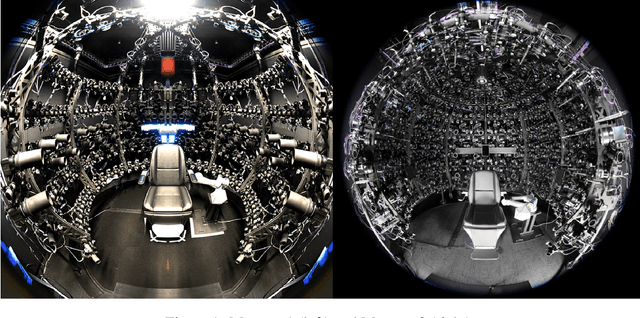

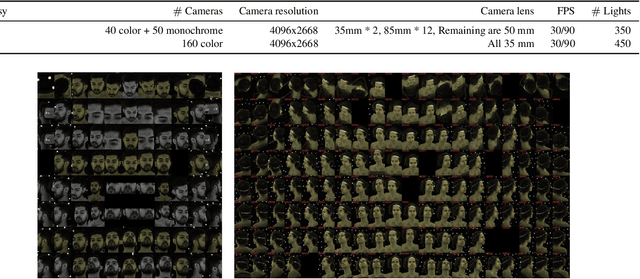
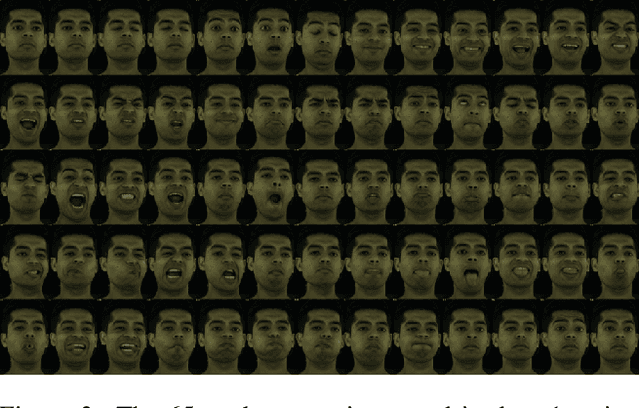
Abstract:Photorealistic avatars of human faces have come a long way in recent years, yet research along this area is limited by a lack of publicly available, high-quality datasets covering both, dense multi-view camera captures, and rich facial expressions of the captured subjects. In this work, we present Multiface, a new multi-view, high-resolution human face dataset collected from 13 identities at Reality Labs Research for neural face rendering. We introduce Mugsy, a large scale multi-camera apparatus to capture high-resolution synchronized videos of a facial performance. The goal of Multiface is to close the gap in accessibility to high quality data in the academic community and to enable research in VR telepresence. Along with the release of the dataset, we conduct ablation studies on the influence of different model architectures toward the model's interpolation capacity of novel viewpoint and expressions. With a conditional VAE model serving as our baseline, we found that adding spatial bias, texture warp field, and residual connections improves performance on novel view synthesis. Our code and data is available at: https://github.com/facebookresearch/multiface
Panoptic Studio: A Massively Multiview System for Social Interaction Capture
Dec 09, 2016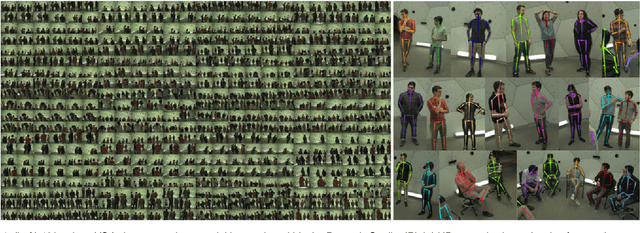
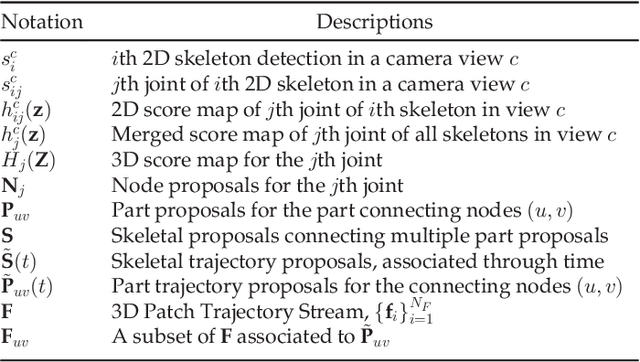

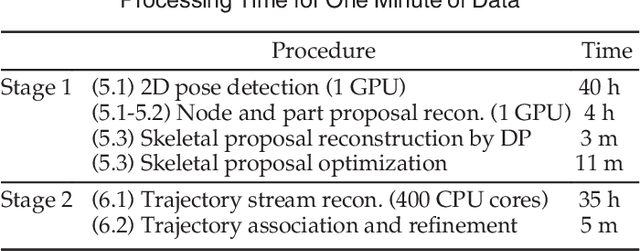
Abstract:We present an approach to capture the 3D motion of a group of people engaged in a social interaction. The core challenges in capturing social interactions are: (1) occlusion is functional and frequent; (2) subtle motion needs to be measured over a space large enough to host a social group; (3) human appearance and configuration variation is immense; and (4) attaching markers to the body may prime the nature of interactions. The Panoptic Studio is a system organized around the thesis that social interactions should be measured through the integration of perceptual analyses over a large variety of view points. We present a modularized system designed around this principle, consisting of integrated structural, hardware, and software innovations. The system takes, as input, 480 synchronized video streams of multiple people engaged in social activities, and produces, as output, the labeled time-varying 3D structure of anatomical landmarks on individuals in the space. Our algorithm is designed to fuse the "weak" perceptual processes in the large number of views by progressively generating skeletal proposals from low-level appearance cues, and a framework for temporal refinement is also presented by associating body parts to reconstructed dense 3D trajectory stream. Our system and method are the first in reconstructing full body motion of more than five people engaged in social interactions without using markers. We also empirically demonstrate the impact of the number of views in achieving this goal.
 Add to Chrome
Add to Chrome Add to Firefox
Add to Firefox Add to Edge
Add to Edge